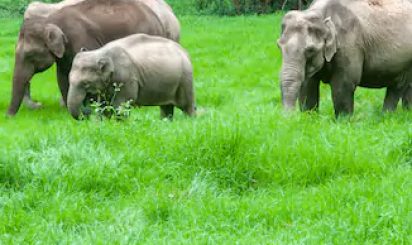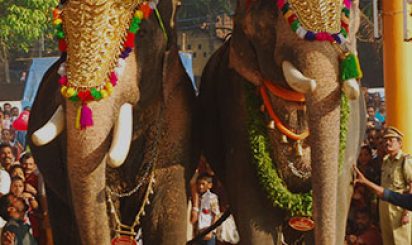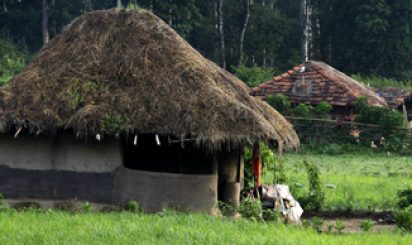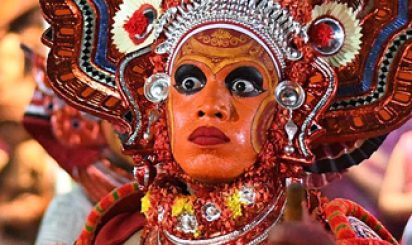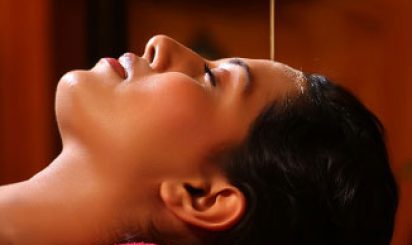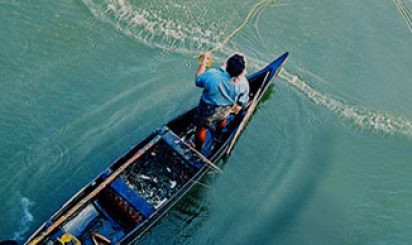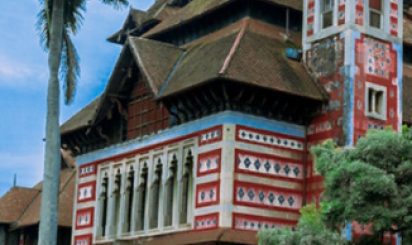
Local Places of Interest
Cherai Beach “The Princess of the Arabian Sea”
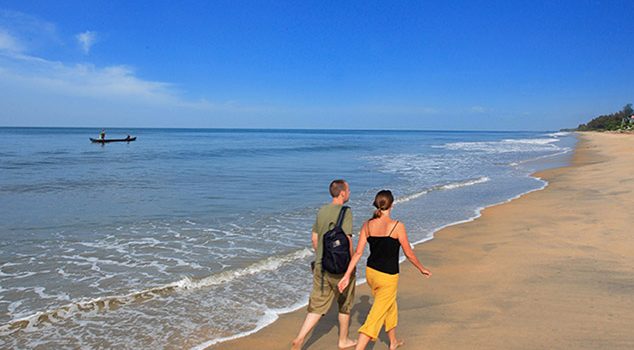
A beautiful stretch of golden beach, an azure sky, and a warm, clean sea all combine to tempt you to take a dip and unwind. For holidaymakers who prefer to relax on the beach, you can quench your thirst with tender coconuts, and if you’re lucky, you might see dolphins at play. With beach beds and umbrellas available for hire, Cherai Beach is a pleasant and convenient place to stay, swim, and sunbathe.
It also offers a variety of accommodations to suit every traveler’s needs. From cozy beachside resorts to comfortable guesthouses, you’ll find the perfect place to unwind.
In addition to its beautiful scenery, Cherai is renowned for its seafood and multi-cuisine restaurants. Indulge in fresh catches of the day and savor diverse culinary delights that will satisfy every palate. Whether you’re looking for a romantic dinner or a casual meal with friends, the dining options here are sure to impress.
The beautifully enhanced walkway at the central beach features high-mast lamps and trained lifeguards, ensuring a safe and enjoyable experience even at night. Stroll along the shore under the glow of the lamps, and let the soothing sounds of the waves create a perfect evening atmosphere. Cherai Beach is not just a daytime paradise; it transforms into a magical destination after sunset, inviting you to relax and unwind in a secure environment.
The Captivating Backwaters of Cherai.
Immerse yourself in the timeless beauty of Cherai’s backwaters, where tranquil lakes, serene lagoons, and winding canals come together to create a breathtaking tapestry of nature. This is the true heart of Cherai, where life flows gently along the shimmering waters of Veeranpuzha, framed by lush coconut groves. As you drift along, witness the vibrant rhythm of village life—watch artisans skillfully craft coir by hand, marvel at majestic wooden boats being built in traditional boatyards, and admire the iconic Chinese fishing nets swaying over the water. You’ll also glimpse diverse fishing techniques, and thriving mangroves that line the shores.
Take a peaceful boat ride through these scenic backwaters, letting the cool, gentle breeze carry your worries away. The journey along the Kollam-Kottappuram National Waterway, from Kochi to Cherai, promises a picturesque escape into the serene, unspoiled beauty of Kerala’s waterways—an experience that will stay with you forever.
Map not available.
Munambam Beach “Muziris Golden Beach”
Situated at the northern end of Cherai Beach, Munambam Beach is where the Veeranpuzha and Chalakkudy Rivers flow into the Arabian Sea. It is the perfect place to sit and watch the union of the rivers and the sea, and witness the formation of a beautiful estuary near Munambam Fishing Harbour. The sights of the sea and backwaters are truly a treat for the eyes, drawing us back to these shores time and time again. Much of the activity along this beach revolves around the local fisherfolk, who carry on with their daily routines. You can observe their lives up close and experience the vibrant fishing culture.
The main attraction of Munambam Beach is its water sports. It is the largest water sports destination in Kerala, offering windsurfing, yachting, kayaking, speed boating, and jet skiing, with options for both fun and professional training. You can also see local fishermen in their traditional canoes and hundreds of colorful boats operating from Munambam Harbour. Don’t miss the opportunity to witness the iconic Chinese fishing nets in action, which is a captivating sight to behold.
There is also a playground adjacent to the beach where children can play and enjoy themselves. Another popular activity on this beach is kite flying, which adds a vibrant touch to the coastal skies. The stunning sunset over the Arabian Sea provides the perfect backdrop and offers endless inspiration for keen photographers.
Map not available.
Paddy Fields
The emerald green paddy fields of Cherai are the rice-producing heart of the region, known for the unique Pokkali variety of rice, cultivated below sea level. These waterlogged fields create a picturesque pastoral landscape. While rice is grown as a single crop, after the harvest, the fields are transformed into thriving fish farms, primarily for prawn cultivation.
As you explore the paddy fields, you’ll encounter a diverse array of exotic flora and fauna. The area offers opportunities to spot vibrant butterflies and numerous captivating bird species, including many migratory ones. It’s a serene escape into nature’s beauty, inviting you to immerse yourself in the rich biodiversity of the area.
Map not available.
Discover the Enchantment of Cherai Lake (Poyil)
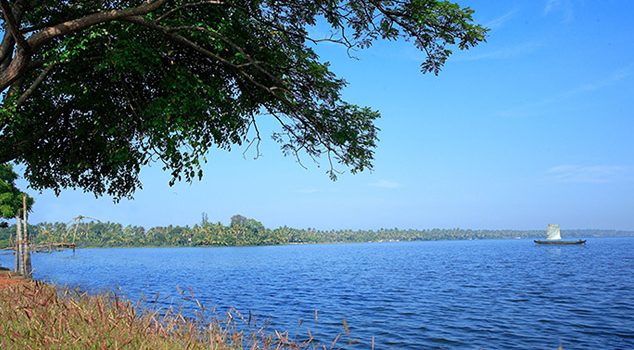
Just a stone’s throw from the main beach lies the enchanting Cherai Lake, a unique gem where the sea and backwaters are separated by a narrow strip of land. Imagine waking at dawn to witness this breathtaking scenery—the sun rising, morning mist gently lifting from the tranquil waters, and traditional fishermen casting their nets in search of the day’s catch.
For an unforgettable experience, embark on a cruise in a charming country boat or a fun pedal boat, allowing you to soak in the serene beauty all around. If you’re feeling adventurous, try your hand at angling and experience the thrill of catching your own fish.
A truly magical phenomenon awaits you here: the mesmerizing sea sparkle, or bioluminescence, locally known as ‘kavaru.’ This unique attraction occurs along the backwaters of Cherai, where a high concentration of micro-plankton called Noctiluca scintillans creates a stunning glow in the water. Sea sparkle is most likely to be seen after the rains, particularly in September and October.
Cherai Lake is not just a destination—it’s a captivating experience waiting to be discovered!
Map not available.
Kuzhupilly Beach: A Serene Paradise for Relaxation and Adventure
Kuzhupilly Beach, with its pristine white sands and tranquil atmosphere, is a true paradise for swimmers and beach lovers. The beach offers an idyllic setting for a relaxing dip, with palm-leaf-thatched umbrellas and hammocks inviting you to unwind amidst nature’s beauty. Its proximity to lush paddy fields, coconut groves, and serene backwaters adds to the charm of the journey, making it a complete retreat. Occasionally, the beach hosts colorful Kite Festivals.
For those seeking thrills, Kuzhupilly Beach is famous for its array of adventure activities. Whether it’s on a Zip Line, Floating Bridge, riding the Sky Cycle, or testing your balance on the Glass Bridge, there is something for every adventurer. Enjoy a fun-filled day with Rain Dance, challenge yourself on the Hanging Bridge, or take to the waters with Kayaking.
Kuzhupilly Beach also offers a picture-perfect venue for unforgettable Beach Weddings, with tropical surroundings, a soft breeze, and a stunning sunset providing a magical backdrop. For businesses, it’s an excellent spot for a unique Corporate Day Out. Whether you’re brainstorming, celebrating achievements, or simply giving your team a well-deserved break, the mix of indoor and outdoor venues ensures the perfect environment for your event
With its blend of relaxation and adventure, Kuzhupilly Beach promises a memorable experience for every kind of traveler.
Map not available.
Sahodhara Ayyappan Museum : A Legacy of Social Reform
Sahodharan Ayyappan, born on August 21, 1889, was a pioneering social reformer, thinker, rationalist, journalist and politician from Cherai. A devoted disciple of Sree Narayana Guru, Ayyappan played a crucial role in challenging the entrenched caste system of his time. On May 29, 1917, his humble abode in Cherai became a landmark of defiance against social discrimination when he organized “misra bhojanam”—a revolutionary feast that brought together individuals from all castes to share a meal under one roof. This event, attended by around 200 people, including many so-called untouchables, was a bold statement against the concept of untouchability and marked a significant step towards social equality.
Ayyappan’s initiative, known as the Sahodara Prasthanam (Brotherhood Movement), sought to promote unity and fraternity among different communities. His efforts earned him the title of “Sahodaran” Ayyappan, and he became a respected figure in the struggle for social reform.
Sahodhara Bhavan not only commemorates a remarkable individual but also stands as a testament to the ongoing fight for social justice and equality, exemplified by his famous slogan: “No Caste, No Religion, No God for Mankind.” Join us at Sahodhara Bhavan to delve into the inspiring story of a man who dared to dream of a just society and to celebrate the enduring impact of his revolutionary vision.
. Today, Sahodharan Ayyappan’s legacy is honored at the Sahodaran Ayyappan Museum. Visitors can explore traditional thatched-roof houses woven from coconut leaves, including the very house in which Sahodaran Ayyappan was born, which offers a panoramic view of the Veeranpuzha. The museum serves as a tribute to his contributions, housing artifacts related to his life and work. Additionally, visitors can access a public library and a research center dedicated to furthering the ideals he championed.
Map not available.
Chennamangalam Jewish Synagogue
Located near Kottayil Kovilakam Hill, the headquarters of the Villarvattom Swaroopam—a local fiefdom in Cochin—this synagogue was established on land offered by the king of Villarvattom to accommodate the Malabari (black) Jews.
Jews migrated from Kodungallur and Palayur to Chennamangalam in 1420. The synagogue, built in the style of the Jerusalem Temple, was initially destroyed in a fire but was rebuilt in 1614 and renovated several times afterward, thanks to special rights and privileges granted by local kings. The women gathered to pray in their own space with a separate entrance upstairs, behind a wooden screen partition.
Over the years, the synagogue faced repeated attacks by the Portuguese, the Dutch, and the rulers of Mysore, all of which caused significant damage. Following the establishment of Israel, many Jews left Kerala in groups, leaving the synagogues unattended and leading to the eventual cessation of worship. Although there are no Jews living here today, the sanctity of the region is respected and preserved.
The Chennamangalam Synagogue is now maintained as a museum, showcasing glimpses of early Jewish life and customs in Kerala, the role of women in the Jewish community, and the unique songs and rituals of Kerala’s Jews. It highlights the peculiarities of their culture and the harmonious existence they maintained with the local community while remaining firm believers in their own traditions.
Map not available.
Paliam Palace Museum
The Paliam Palace was the residence of the Paliath Achans, who held the prestigious posts of Prime Minister and Chief of Army of the Kingdom of Cochin. As loyal ministers, the Paliath Achans defended Cochin against various domestic and foreign threats.
During the 16th century, when the king’s security was jeopardized by the Portuguese, the then Paliath Achan ensured the safety of the Raja by escorting him to Chendamangalam, where he lived incognito. In appreciation of the Paliath Achan’s services, the Dutch renovated this building in Chendamangalam and presented it to him. The Paliath Achan used it as his official residence, where many significant political and administrative decisions were made. He would address the people of Chendamangalam from a podium built atop the gateway of the palace. “Achan” is the title given to the karanavar (head of the family) of the Paliam noble family.
The Paliam Palace Museum chronicles the historic records, letters of the Paliam family, and important events that took place in the palace, providing valuable insights into the region’s history.
Map not available.
Paliam Nalukettu Museum
Paliam Nalukettu is a classical structure built in the ‘Nalukettu’ style of architecture by an elder member of the family in 1786. The design and construction are closely linked to the life cycle of women in the family, reflecting their rituals, beliefs, and celebrations. This space is exclusively for the women and minor boys of Paliam.
The family followed a matrilineal system, where lineage is traced through the mothers. The karanavar (head of the family) is called Valiyachan, and inheritance rights are passed to his nephew (sister’s son). Valiyachan holds the status of family manager. Unlike other nalukettus, where the oldest male member is in charge of household administration, in Paliam, the control of the nalukettu rests with Valiyamma (the head woman).
The structure features a large central courtyard that opens to the sky, surrounded on all four sides by a series of rooms. A common space known as ‘Purathalam’ serves as a gathering area for recreational activities and conversations. There was also a common dining hall and kitchen where all members lived and dined together under the protection of Valiachan (the eldest person in the family).
Paliam Nalukettu was the traditional tharavad (homestead) where several generations of the matrilineal joint family of Paliam lived together.
Map not available.
Portuguese Fort The Oldest European Monument in India
Built by the Portuguese on 27 September 1503 using only timber, and later renovated in 1505 by replacing the wooden structure with stone, the Portuguese Fort, also known as “Aya Kotta,” is the oldest European monument in India. It was originally constructed as an outpost to safeguard the ancient port of Muziris. The Portuguese used Pallippuram Fort as a base to monitor ships traveling along the Periyar River to the Arabian Sea. The fort was captured by the Dutch in 1661, and in 1789, it was sold to the King of Travancore. By 1795, it had come under the ownership of the British East India Company. Over time, the fort lost its significance and was abandoned by the military in 1909.
The three-storied hexagonal structure remains a well-preserved Portuguese bastion. The fort was once equipped with numerous guns, commanding all directions around it. Inside, the fort features an open space providing access to the cellar. The floor inside is elevated five feet from the ground, and beneath this platform is a cellar, which was used for storing gunpowder. The small cellar opens into a passage that runs obliquely from north to south. It is 4 feet high and 7 feet square. The fort underwent repairs between 1596 and 1605 to maintain its structure.
Map not available.
British & Vypeekotta Seminary
Discover the unique history of the only place in the world named “British”—a site with a rich and varied past. Initially granted to the Portuguese by the Raja of Cochin, this location became home to the Vyppikotta Seminary and a Jesuit Monastery in 1574. The seminary served as a pivotal institution for educating priests in the ceremonies and rituals of the Roman Catholic Church.
In 1575, Portuguese missionaries introduced Kerala’s first printing press at the adjoining seminary, marking a significant milestone in the region’s history. However, due to the threat of Dutch attacks, both the printing press and the seminary were relocated to Chennamangalam.
By 1728, the seminary had been repurposed as a leprosy asylum. The site entered a new chapter in its story in 1795 when the British East India Company defeated the Dutch and took control of the area. The leprosy asylum, along with 9 acres of land and several buildings, came under direct British administration and thus became known as “British.”
This location was strategically situated along a canal trade route that bordered the Cochin and Travancore Kingdoms. The British positioned themselves in the middle, serving as part of the common boundary. Both parties established toll collection centers to regulate the trading boats plying both routes, and the British offered lower taxes, prompting merchants to set up offices in British for tax benefits.
The leprosy asylum was closed in 1921, and in 1925, the Carmelite Sisters of St. Theresa (CSST) arrived, transforming the site into a vibrant community hub. They established a primary school and an orphanage, continuing the legacy of service and education that this historic site represents.
Visit the British & Vypeekotta Seminary to explore a unique piece of history that reflects the diverse and evolving heritage of the region.
Map not available.
Kottappuram Fort
In ancient times, Kottappuram Fort occupied a strategic location, controlling the movement of ships and boats to and from the Malabar coast. Today, however, the fort lies in ruins. Built by the Portuguese in 1523 CE, the fort—also known as Cranganore Fort or Kodungallur Fort—was situated at the mouth of the Periyar River.
In 1662 CE, the Dutch fleet attacked the fort but managed to capture it only in 1663 CE, causing significant damage to its structure. The Dutch later reduced its size and used it as a post to monitor their trade ships. Hyder Ali of Mysore attempted to negotiate with the Dutch to purchase the fort, but during Tipu Sultan’s reign over Malabar, on July 31, 1789 CE, the Maharajah of Travancore, Ramavarma Dharmaraja, purchased the fort, recognizing its strategic importance in protecting the land and kingdom. He also acquired the Pallipuram Fort.
The agreement was executed by Raja Kesava Dasa, the Dewan of Travancore, and John Gerard Van Angelbeck, the Dutch Governor. In 1909 CE, the Travancore government decided to preserve the site as public property and erected a memorial stone within the fort. Visitors can still see the boundary stones (“Kothikallu”) marking the borders of the Travancore and Cochin kingdoms on the fort premises.
Map not available.
Pattanam
The Pattanam excavations were the first multidisciplinary archaeological dig undertaken in Kerala. The main objective was to uncover evidence that could help identify an early historic urban settlement and the ancient Indo-Roman port of Muziris (also known as Musiri) on the Malabar Coast. The excavation yielded significant findings, including human bones, storage jars, a gold ornament, glass beads, stone beads, utilitarian objects made of stone, copper, and iron, typical pottery, early Chera coins, a brick wall, a brick platform, a ring well, a wharf with bollards, and a six-meter-long wooden canoe buried 2.5 meters below the surface, parallel to the wharf structure. These discoveries suggest a vast “urban” settlement.
The findings indicate that the site was initially occupied by indigenous “Megalithic” (Iron Age) people, followed by Roman contact during the Early Historic Period. Evidence suggests that the site was continuously inhabited from at least the 2nd century BC to the 10th century AD. The region’s extensive maritime contacts during the Early Historic Period are demonstrated by the large number of Roman amphora shards, terra sigillata fragments, and Sassanian, Yemenite, and other West Asian pottery. The discovery of roulette ware, likely produced in the Bengal-Gangetic region, further highlights Pattanam’s significance in the broader Indian context.
Map not available.
Maliankara – The Cradle of Christianity in India
Discover Maliankara, a historic site where St. Thomas the Apostle first arrived in India in AD 52, marking the beginning of Christianity in the country. This significant location, once part of the ancient port of Muziris, stretched from present-day Kodungallur to Pattanam (near North Paravur).
At Maliankara, you’ll find a monument under the Diocese of Kottapuram, featuring a small yet fascinating historical museum. This museum offers a glimpse into the rich heritage of Christianity in India, providing valuable insights into the early days of the faith in this region.
Visit Maliankara and immerse yourself in the history where it all began, exploring the roots of one of the world’s major religions.
Map not available.
Harmony Park (Jewish Cemetery)
The Muziris region is home to numerous synagogues and cemeteries, with the Jewish cemetery near Kottayil Kovilakam being particularly notable. After the remaining Jewish community departed for their homeland, Israel, these historical buildings fell into neglect. However, efforts are now underway to conserve them for the benefit of tourists and those interested in Kerala’s rich heritage. As a result, the cemetery has been designated as a protected area.
The cemetery features marble tombstones adorned with Hebrew inscriptions, highlighting its historical significance.
This region is celebrated for its religious harmony, with a church, a temple, a synagogue, and a mosque located in close proximity to one another around the Kovilakam. It is a unique place in India where four major religions—Christianity, Hinduism, Islam, and Judaism—are practiced within just a few meters of each other.
Map not available.
Muziris Heritage Project
Once used to keep trade connections with Rome, Greece, China and Persia, Muziris, a piece of land that lies across the borders of Ernakulam and Thrissur districts of central Kerala, is now a major heritage centre in Kerala. Muziris once had a thriving port in the first century BC and was the gateway for various religious faiths like Christianity, Judaism, Islam and others.
The Muziris Heritage Project conserve and showcases the culture of 3000 years or more. The main sites included in this project are Paravur Synagogue, Kottayil Kovilakom in Chennamangalam, the Chennamangalam synagogue, Paliam Kovilakom, Paliam Nallukettu etc.
Map not available.
Gowreeswaram Temple & Festival
Sree Gowreeswara Temple, also known as Malyala Pazhani, is a significant Hindu pilgrimage center in Kerala, established in 1912. The temple, which features an idol installed by the revered social reformer Sree Narayana Guru, holds deep connections to the social reform movement. While the main deity of the temple is Lord Subrahmanya, the temple is named after Sree Gowreeswaran, or Lord Shiva, who is the father of Lord Subrahmanya.
Unique in Asia, Cherai Gowreeswara Temple is renowned for its chathurmukha kovil design—a shrine with four side doors. The main sreekovil houses Lord Subramanya facing east, Lord Ganapati facing south, Lord Shiva facing west, and Goddess Parvathy facing north. Each deity has its own mukha mandapa, sopanam, and pranalam, and the chuttambalam features agra-mandapams on all sides.
The temple’s legendary festival is a spectacular blend of cultural and religious celebration. Experience the grandeur as over 25 elephants trumpet their presence, and marvel at the women adorned in their finest silk sarees. Join the crowd in waving to the enchanting melodies of Panchavadya music, and be captivated by the evening’s thrilling firework display. The festival culminates in a grand finale, with visitors leaving filled with nostalgia, knowing the magic will be recreated at the same time next year.
The festival typically takes place in January or February and is a must-see event for anyone wishing to immerse themselves in the rich cultural heritage of Kerala.
Map not available.
Varaha Temple & Chariot Festival
Welcome to the exquisite Varaha Temple of Cherai, built in 1869. Azheekal Sree Varaha Venkateswara Temple stands out as the only “Somporanakshetra of Naga” type in South India, featuring all seven avaaranas. Unique among Indian temples, it houses the deities of Sree Varaha and Sree Venkateswara—both incarnations of Lord Vishnu—installed side by side and worshipped as a single Moorthy (God).
This temple is renowned for its stunning wood carvings, the exquisite Silver Pallake, and the intricately designed ceiling of the eastern Gopuram. The temple tank, known as “Sreevarahapuskarani,” showcases unique artistic excellence and beauty.
One of the temple’s most remarkable features is its famous ratha (chariot), dedicated to the deities in 1909. Crafted entirely from silver and adorned with Chinese glass, this chariot is a rarity in temple architecture. It is the only ratha in the world that runs on rails, with its rathaveethi (track) constructed under the supervision of European engineers.
Traditionally, the chariot festival occurs twice a year, where the ratha is pulled around the temple by devotees, accompanied by dramatic drumbeats that fill the air with excitement. No other chariot festival in the world can boast such unique characteristics, and one of its most significant aspects is the sense of continuity it offers, connecting the present with the rich traditions of the past.
Join us at the Varaha Temple for a cultural experience like no other, where history, artistry, and devotion come together in a spectacular celebration!
Map not available.
Manjumatha Basilica “Basilica of Our Lady of Snow”
Step into history at Pallipuram Church, built by the Portuguese in 1507. This architectural gem houses an exquisite painting of Ave Mary, beautifully positioned above the altar and originating from Portugal. Remarkably, the church withstood the Dutch slaughter of Catholics, and even earned the respect of its captors, who constructed a chapel and a priest’s house to support its community.
The Manjumatha Basilica is steeped in legend, particularly linked to Tipu Sultan’s invasion of South India in the 18th century. During this tumultuous time, locals sought sanctuary within the church, praying fervently to their Holy Mother. It is said that a thick fog enveloped the church, misleading Tipu Sultan’s army and compelling them to turn back. This miraculous event gave rise to the name “Manjumatha,” which means “the mother’s church shrouded in snow.”
Cherai’s vibrant cultural life is highlighted by the annual Feast of Our Lady of Snow, a week-long celebration from 30th July to 5th August. The festival culminates on the eighth day, 15th August, with the joyous observance of the Assumption of Our Lady. This lively event is a delightful blend of town and country, showcasing a captivating mix of city fashion and time-honored traditions reminiscent of English country fairs.
On 27 August 2012, Pope Benedict XVI issued a decree elevating the church to the esteemed status of Basilica, recognizing its historical and spiritual significance. On the festival’s final day, the true spirit of the celebration comes alive as exhibitors offer their cherished wares at unbeatable prices. Visitors leave with not just souvenirs but also treasured memories of a rich cultural heritage that continues to resonate.
Join us at Manjumatha Basilica, where faith, history, and community come together in a celebration that captivates the heart!
Map not available.
Juma Mazjith-Munambam
Juma Mazjith-Munambam is an elegant mosque characterized by its harmonious proportions and simplicity. While the exact date of its original construction remains unknown, the mosque was reconstructed in 1869. This beautiful place of Muslim worship offers visitors to Cherai an intriguing glimpse into the region’s rich cultural heritage and architectural beauty.
Map not available.
Kizhthali Siva Temple- Oldest Temple in South India
Kizhthali Siva Temple is one of the oldest temples in South India, dating back to the period between 113 BC and 343 AD, during the reign of the Chera dynasty, who were ardent devotees of Lord Shiva. According to folklore, the temple’s idol was installed by Lord Parashurama himself. It is one of the eighteen Thali temples in Kerala dedicated to Lord Shiva, and it boasts the largest Shivalinga in the region.
Over its long history, the temple suffered multiple destructions, first at the hands of the Portuguese and later the Dutch. However, the most severe damage occurred during the siege of Tipu Sultan. Today, only the Garbagriha (sanctum sanctorum) remains of the original temple. The once expansive temple complex was spread over a vast area, now largely lost to time and conflict.
Map not available.
Thiruvanchikulam Mahadeva Temple
This temple is said to be more than 2,000 years old and is remarkable for its numerous representations of Shiva. It is the only Shaivite Thiruppathi in Kerala out of the 274 in India. The temple has ancient references in Tamil Sangam literature and is one of the oldest Shiva temples in South India, where Lord Shiva is believed to reside along with his entire family.
The temple was attacked and damaged during Tipu Sultan’s invasion of Kerala; its copper roofing, gold, and jewels were looted. Despite this, the temple boasts beautiful mural paintings and wooden carvings that depict characters from the great Hindu epic, the Ramayana.
The temple festival, known as ‘Utsavam,’ is notable for its rituals. One of the significant rites, the Palliyara Pooja, is performed by devotees seeking peaceful marital life and children. This pooja attracts hundreds of people and is conducted on full moon nights during the evening.
The Shivarathri festival is celebrated with great pomp, and one of the highlights is the Anayottam (elephant race), which draws large crowds. Another important festival celebrated at the temple is the Vaisakha Brahmotsavam.
Map not available.
Cheraman Juma Masjid – The First Mosque in India
Built in 629 AD, after the arrival of Malik Bin Dinar, the missionary who introduced Islam to Kerala, Cheraman Juma Masjid holds the distinction of being the first mosque in India and the second in the world, after the mosque in Medina. The mosque’s architecture intriguingly resembles that of a Hindu temple, symbolizing Kerala’s rich syncretic culture.
Steeped in legend, the mosque’s story begins during the reign of the Chera dynasty. According to tradition, a Chera king had a vision of the moon splitting into two. Arab merchants, arriving at the historic Muziris Port, explained the vision as a miracle performed by Prophet Mohammed. Captivated by this, the king traveled to Mecca, where he met the Prophet, embraced Islam, and adopted a new name. On his return journey, he passed away in Salalah, Oman, but gave clear instructions for his companions to continue his mission in his homeland.
Inside the mosque, a block of white marble is believed to have been brought from Mecca. An ancient oil lamp, thought to have been burning since the mosque’s origin, continues to shine, adding to the mosque’s spiritual aura. Cheraman Juma Masjid remains a sacred place where people of all faiths come together to experience its profound spiritual atmosphere.
Map not available.
Kodungallur Bhagavathi Temple
Kodungallur Bhagavathi Temple, also known as Kurumbakavu Bhagavathi Temple, is a major shrine dedicated to Goddess Kali. Renowned as one of the Shakti Peethams (powerful seats) of the Goddess in Kerala, the temple’s immense power is believed to stem from the five Chakras consecrated by Adi Shankaracharya. The temple is considered the second abode of Kannaki, an incarnation of Goddess Kali. It is said that the idol of Kannaki was discovered 1,800 years ago by the Chera king, Cheran Chenkottuvan. The temple is built in the typical Kerala architectural style and features many secret paths and chambers.
The temple is famous for its annual Bharani Utsavam, or Kaavutheendal. During this festival, devotees witness a sea of red as a flurry of oracles (velichappad) dance in a trance and offer their prayers to the deity. It is a mystical experience for all who have the opportunity to view it. The devotion of believers, as they dance with the oracles in spiritual euphoria, is truly a captivating sight. Both male and female oracles dash around the temple, striking their heads with swords, proclaiming their communion with the Mother Goddess. As part of an ancient and almost forgotten ceremony, devotees still sing lewd songs and drink liquor as they travel from their villages to the temple.
Map not available.
Mar Thoma Pontifical Shrine
This modern shrine honors St. Thomas the Apostle of Christ, who is believed to have first arrived in Maliankara on November 21, 52 AD. St. Thomas is said to have preached the gospel here, baptized new believers, and established Christian communities. The Marthoma Church is thought to be the first of the seven churches St. Thomas founded in Kerala. Although no remnants of the old city or church remain, in 1954 CE, a relic of St. Thomas’s right arm bone was brought from Ortona and enshrined behind the church altar.
The shrine, modeled after St. Peter’s Basilica in the Vatican, attracts thousands of visitors, regardless of religion, caste, or creed.
The Marthoma Smrithi Tharangam (Sanskrit for “waves of memory about St. Thomas”) features a 35-minute audio-visual presentation that offers a glimpse into the Apostle’s mission. It showcases St. Thomas’s life, his journey from Palestine, arrival at Maliankara, his apostolic mission in India, his martyrdom in Mylapore, and the eventual bringing of his relic to Azhikode.
Map not available.
Kottakavu Church
Kottakavu Church is believed to be one of the seven churches founded by St. Thomas in 52 AD. Known as ‘Valiyapally’ (big church), it served as a mother church for the region. In the 19th century, a small chapel in front of the church preserved an ancient Persian Cross, engraved on granite stone, which is thought to have been sculpted by Mar Sabore or Mar Prothe around 880 CE.
During his apostolic mission, St. Thomas founded Christian communities in this area and is believed to have erected a wooden cross at the site of the old chapel. This cross stood until the 18th century, when it was destroyed during Tipu Sultan’s siege. Due to insufficient space in the old church for conducting Holy Mass and community functions, a new church was built and blessed in August 2002.
The parishioners have preserved the old church situated behind the new one, which features a massive wall known as ‘Anamathil.’ To the west lies a pond where it is believed that the Apostle baptized devotees.
Map not available.
The Holy Cross Church
The Holy Cross Church established by Jesuit priests in 1577. Afraid of Dutch attack The printing press and seminary in Pallipuram started by Portuguese Missionaries were forced to shift into this place. It is said that certain parts of the church building got destroyed during the time of Tipu’s invasion. The Vattezhuth [old Malayalam inscriptions] from the 16th century, found in front of the church wall are a witness to the old tradition and heritage it holds.
It is believed that Saint Francis Xavier, the great Christian missionary, lived in the old church building. While considering the history of church it is important to note that the architectural styles followed in Kerala churches in early period were similar to those of Hindu temples. It was the Portuguese who brought a change in the church architecture, along with the Latinization of the Kerala church.
Map not available.
Munambam Fishing Harbour
The Munambam Fishing Harbour is one of the largest and busiest in Kerala, with over 1,000 fishing boats operating from it. High-quality fish are exported in large quantities to Europe and other destinations. The sight of the sign “Munambam Fresh Fish” is a sure way to attract both locals and visitors, as it symbolizes the promise of the highest quality fish compared to other regions.
At this bustling harbour, you’ll find an array of fresh, frozen, and dried fish available for purchase, including shrimp, tuna, cuttlefish, and squid, all sold in large quantities. Fish are packed and preserved with ice in an extremely clean environment. Fishing is the main source of income in this area, providing a livelihood for more than 20,000 local residents.
Nearby, you can explore several boat-building yards, ice factories, and fish processing units. The best time to visit the harbour is early in the morning, when you can witness the traditional auction process at its peak and even participate alongside friendly local businesspeople.
In June and July, trawling is banned along the Kerala coast. During this time, the fisherfolk in the area prepare to return to the sea. On the midnight of August 1, about 100 boats set out on their first trip in weeks, almost as if it were a race to see which boat would reach the fishing grounds first. Some fisherfolk burst crackers on their way out of the harbour, filling the entire atmosphere with electric anticipation.
Map not available.
Paravur Market
Paravur Market, once a vital center of commerce, is located by the scenic backwaters. A unique sight here is the vanchis (small boats) unloading market supplies, something rarely seen elsewhere in Kerala. Despite its historical roots, the market remains a bustling commercial hub in the area.
Tuesdays and Saturdays are especially busy, as sellers and buyers flock to the market in large numbers. What sets Paravur Market apart is the blend of heritage buildings that stand alongside modern structures, preserving its rich historical charm amidst ongoing development.
Map not available.
